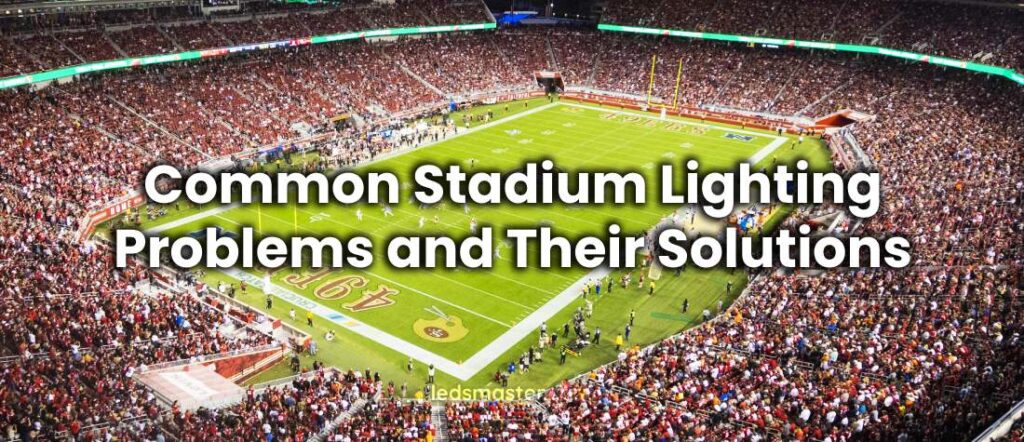Lighting can significantly impact the quality of a stadium experience, from visibility issues for players to discomfort for spectators. Addressing common problems like insufficient brightness, uneven distribution, and glare is crucial for optimal performance and enjoyment. Discover how to enhance your stadium’s lighting and overcome these challenges effectively.
Table of Contents
ToggleLighting Performance Issues
Insufficient Brightness
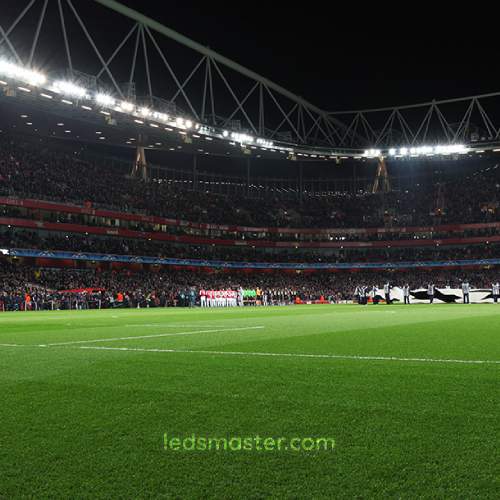 Insufficient brightness is a common issue in stadium lighting that can significantly affect the visibility and overall experience for both players and spectators. This problem arises when the lighting system fails to provide adequate illumination, leading to dimly lit areas on the field or in the stands.
Insufficient brightness is a common issue in stadium lighting that can significantly affect the visibility and overall experience for both players and spectators. This problem arises when the lighting system fails to provide adequate illumination, leading to dimly lit areas on the field or in the stands.
The primary effect of insufficient brightness is reduced visibility. Players may struggle to see the ball or other players clearly, leading to decreased performance and increased risk of injuries. Spectators may also have difficulty following the action, diminishing their enjoyment of the event. Additionally, inadequate lighting can affect broadcast quality, making it harder for viewers at home to follow the game.
The fix for insufficient brightness involves upgrading the lighting fixtures to higher wattage or more efficient LED lights that provide greater illumination. Conducting a thorough lighting audit can help identify areas where brightness is lacking. Additionally, ensuring proper fixture placement and alignment can enhance the overall brightness. Installing dimmable lights can also allow for adjustments based on specific event requirements, ensuring optimal visibility at all times.
Uneven Lighting Distribution
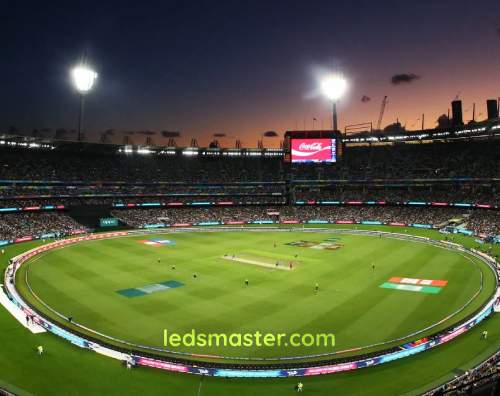 Uneven lighting distribution occurs when some areas of the stadium are significantly brighter or darker than others. This inconsistency can be caused by poor fixture placement, inadequate number of lights, or the use of inappropriate lighting technology.
Uneven lighting distribution occurs when some areas of the stadium are significantly brighter or darker than others. This inconsistency can be caused by poor fixture placement, inadequate number of lights, or the use of inappropriate lighting technology.
Uneven lighting can create problematic shadows and bright spots, disrupting the visual experience for players and spectators. For athletes, it can lead to performance issues as they may have difficulty tracking the ball or other players when moving between areas of differing brightness. For spectators, it can detract from the enjoyment of the event and create an unprofessional appearance for the stadium.
To fix uneven lighting distribution, it’s essential to perform a comprehensive lighting design assessment. This includes mapping out the stadium and strategically placing fixtures to ensure even coverage. Using high-quality LED lights with appropriate beam angles can help distribute light more uniformly. Additionally, employing lighting simulation software during the planning phase can predict and correct uneven distribution before installation.
Glare Issues
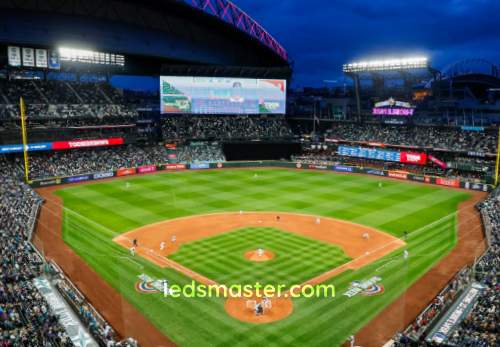 Glare is a common problem in stadium lighting where intense or misdirected light causes discomfort or visual impairment. This issue often results from improperly aimed fixtures or overly bright lights that create excessive contrast.
Glare is a common problem in stadium lighting where intense or misdirected light causes discomfort or visual impairment. This issue often results from improperly aimed fixtures or overly bright lights that create excessive contrast.
Glare can be particularly detrimental to both players and spectators. For players, it can impair vision, making it challenging to see the ball or other players clearly, potentially leading to mistakes or injuries. For spectators, glare can cause eye strain and reduce the overall enjoyment of the event. Additionally, glare can negatively affect broadcast quality, making it difficult for cameras to capture clear images.
Addressing glare issues involves using fixtures with proper shielding or anti-glare features. Adjusting the angle and orientation of the lights to direct the beams away from players’ and spectators’ lines of sight can significantly reduce glare. Utilizing diffused lighting or installing baffles and louvers can also help manage glare and improve visual comfort in the stadium.
Flickering Lights
Flickering lights are a problematic issue in stadium lighting systems, often caused by electrical issues, poor-quality fixtures, or incompatibility with control systems. Flickering can be intermittent or continuous, leading to an unstable lighting environment.
Flashing stadium lights can be highly distracting and uncomfortable for both players and spectators. For athletes, it can affect concentration and performance, as the changing light levels can be disorienting. For spectators, flickering can cause eye strain and reduce the enjoyment of the event. Additionally, flickering can interfere with high-speed cameras, impacting the quality of televised broadcasts.
Fixing flickering lights typically involves identifying and resolving electrical issues, such as loose connections or incompatible dimmer switches. Upgrading to high-quality LED fixtures designed to minimize flicker can also help. Ensuring that all components of the lighting system, including drivers and control systems, are compatible and functioning correctly is crucial for maintaining a stable lighting environment.
Inadequate Color Rendering
Inadequate color rendering occurs when lighting fixtures fail to accurately reproduce colors as seen in natural light. This issue is typically due to low Color Rendering Index (CRI) values in the lighting technology used, which can distort the appearance of colors.
Poor color rendering can affect both players and spectators by making it difficult to distinguish between different colors and objects on the field. For athletes, this can impair performance by making it harder to track the ball or other players accurately. For spectators and broadcasters, inaccurate color representation can diminish the visual appeal of the event and impact the quality of televised content.
To improve color rendering, use lighting fixtures with a high CRI value, ideally above 80. LEDs and certain types of high-intensity discharge lamps offer better color accuracy compared to older lighting technologies. Conducting a lighting design review to ensure proper fixture selection based on CRI requirements can also enhance color rendering performance.
Long Warm-Up Times
Long warm-up times refer to the delay required for lighting fixtures to reach their full brightness after being turned on. This issue is common with certain types of high-intensity discharge lamps, which need several minutes to achieve optimal illumination.
Long warm-up times can be disruptive, especially during events where immediate lighting adjustments are needed. Delays in achieving full brightness can affect the start of games, warm-ups, or other activities, leading to potential delays and inconveniences for both players and spectators.
To address long warm-up times, consider using lighting fixtures that reach full brightness instantly, such as LEDs. These fixtures do not require warm-up periods and provide immediate illumination. Upgrading to modern lighting technologies with quick start capabilities can help ensure that lighting conditions are optimal right from the start.
Excessive Heat Generation
Excessive heat generation occurs when lighting fixtures produce more heat than desired, which can be common with older or inefficient lighting technologies. This heat can affect both the fixtures and the surrounding environment.
The primary effect of excessive heat generation is the potential for overheating, which can damage the fixtures and reduce their lifespan. It can also contribute to increased cooling costs for the stadium and create an uncomfortable environment for players and spectators.
To mitigate excessive heat generation, opt for lighting technologies with lower heat output, such as LED fixtures. LEDs are more energy-efficient and produce less heat compared to traditional lighting technologies. Ensuring proper ventilation around fixtures and maintaining an effective cooling system can also help manage heat levels.
Inconsistent Color Temperature
Inconsistent color temperature refers to variations in the color of light emitted by different fixtures or even within the same fixture. This problem can arise from using multiple types of lighting technologies or fixtures with different color temperatures.
Inconsistent color temperature can create an uneven visual experience, with some areas of the field appearing warmer or cooler than others. This can be distracting for players and reduce the overall aesthetic quality of the lighting. For television broadcasts, it can result in visual inconsistencies and affect the viewer’s perception of the event.
To ensure consistent color temperature, use fixtures with the same color temperature rating across the entire lighting system. Modern LED fixtures typically offer consistent color temperature and can be easily matched. Conducting a lighting design assessment to standardize fixtures and maintain uniform color temperature throughout the stadium is essential.
Inadequate Illumination for High-Speed Sports
Inadequate illumination for high-speed sports occurs when the lighting system fails to provide sufficient brightness and uniformity for fast-paced games. This problem can arise from using insufficiently bright fixtures or poor lighting design.
Inadequate illumination for high-speed sports can hinder players’ ability to see the ball and other players clearly, leading to decreased performance and increased risk of accidents. For spectators, it can diminish the enjoyment of the game and affect the quality of television broadcasts.
To improve illumination for high-speed sports, ensure the lighting system provides high brightness levels and uniform coverage. Use high-intensity fixtures with appropriate lux levels for the specific sport. Conduct a lighting design review to ensure that light distribution meets the needs of high-speed activities and provides optimal visibility.
Shadows on the Playing Field
Shadows on the playing field occur when the lighting system creates dark areas or uneven illumination, often due to improper fixture placement or insufficient lighting levels. Shadows can interfere with the game and reduce overall visibility.
Shadows can disrupt gameplay by creating visual obstacles for players, making it difficult to track the ball or other players. For spectators, shadows can detract from the viewing experience and affect the overall perception of the stadium’s lighting quality.
To minimize shadows on the playing field, ensure that fixtures are strategically placed to provide even coverage and reduce the likelihood of shadowing. Using fixtures with appropriate beam angles and incorporating multiple light sources can help achieve uniform illumination and eliminate shadows.
Insufficient Lighting for Spectators
Insufficient lighting for spectators occurs when the illumination provided in the stands or viewing areas is inadequate. This can result from poor fixture placement, insufficient brightness, or uneven light distribution.
The effect of insufficient lighting for spectators includes a reduced viewing experience, which can affect their enjoyment and satisfaction during events. Poor visibility can also pose safety risks, particularly in emergency situations.
To address insufficient lighting for spectators, ensure that the lighting design includes adequate illumination for all viewing areas. This may involve adding additional fixtures or adjusting the placement of existing lights to provide uniform coverage. Conducting a lighting audit to assess and adjust lighting levels can help improve the overall spectator experience.
Poor Fixture Alignment
Poor fixture alignment occurs when lighting fixtures are not positioned or aimed correctly, leading to uneven lighting and potential hotspots or dark areas. This issue can result from incorrect installation or adjustments.
Poor fixture alignment can create inconsistencies in lighting, affecting visibility and performance. For players, this means dealing with varying light levels and potential glare, while spectators may experience an uneven visual experience. It can also impact the quality of broadcast footage.
To address poor fixture alignment, perform a detailed lighting design assessment and adjust the positioning and aiming of fixtures accordingly. Regular maintenance and realignment checks can ensure that fixtures are correctly positioned to provide optimal illumination and reduce lighting inconsistencies.
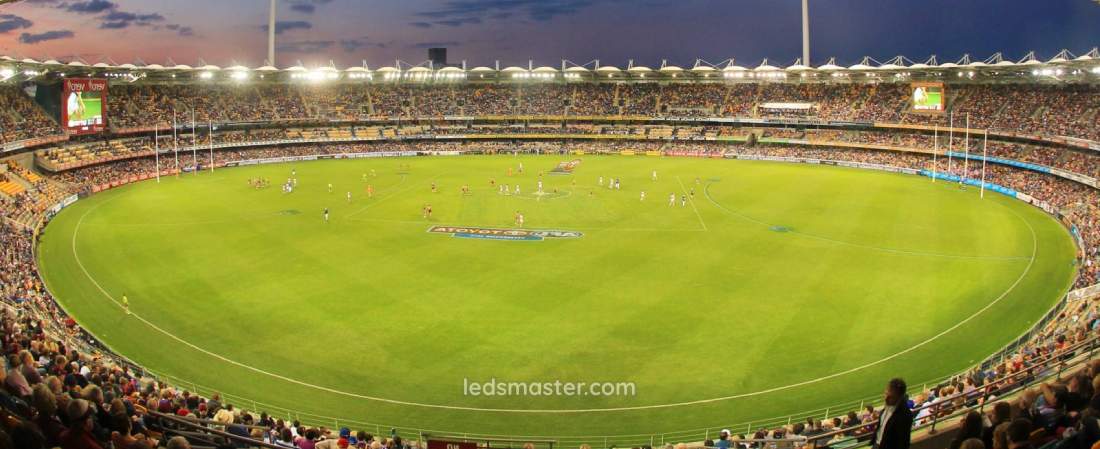
Maintenance and Operational Costs
Short Lifespan of Fixtures
The short lifespan of fixtures is a common issue in stadium lighting, typically resulting from the use of low-quality components or inadequate design. Fixtures with a short operational life require frequent replacements, which can disrupt the stadium’s functionality and increase costs.
A short lifespan leads to frequent interruptions as fixtures need to be replaced, resulting in potential downtime during events. This frequent replacement not only affects the lighting quality but also incurs higher costs over time, both in terms of purchasing new fixtures and the labor required for installation.
To address this issue, investing in high-quality, durable lighting solutions with longer lifespans is essential. Modern LED fixtures, for instance, offer extended operational lives compared to traditional lighting technologies. Regular maintenance checks and the use of high-quality materials can also help prolong the life of the fixtures and reduce the frequency of replacements.
High Initial Installation Costs
High initial installation costs occur when the expenses for setting up a new lighting system are significant. This can be due to the cost of fixtures, installation labor, and any necessary infrastructure modifications.
The effect of high initial installation costs is a substantial financial outlay upfront, which can strain the budget and delay project implementation. While long-term savings may be realized through reduced maintenance and energy costs, the initial investment can be a barrier to upgrading or installing new systems.
To manage high initial installation costs, consider financing options or phased implementation to spread out expenses. Investing in energy-efficient and low-maintenance lighting solutions can provide long-term savings that offset the initial costs. Exploring grants or incentives for upgrading to more sustainable technologies can also help alleviate financial burdens.
High Energy Consumption
High energy consumption is a significant concern with traditional stadium lighting systems, especially those using outdated technologies like metal halide or mercury vapor lamps. These systems often require substantial power to operate, leading to increased operational costs and a larger environmental footprint.
The primary effect of high energy consumption is the increased cost of running the stadium lighting system. This can significantly impact the budget for stadium operations and maintenance. Additionally, high energy use contributes to a larger carbon footprint, making the stadium less environmentally friendly. It can also strain the local power grid, especially during large events.
The most effective fix for high energy consumption is transitioning to energy-efficient LED lighting. LEDs consume significantly less power while providing comparable or superior illumination. Implementing smart lighting controls, such as motion sensors and dimmers, can further reduce energy usage by adjusting light levels based on real-time needs. Regular maintenance and cleaning of fixtures can also ensure they operate at optimal efficiency, further reducing energy consumption.
High Maintenance Costs
High maintenance costs in stadium lighting systems often stem from the complexity of the installation and the need for specialized equipment and labor. These costs include routine servicing, repairs, and occasional replacements, all of which contribute to the overall operational expenses.
The impact of high maintenance costs is a significant financial strain on the stadium’s budget. This can limit resources available for other improvements or operational needs. Additionally, the frequent need for maintenance can lead to interruptions in lighting quality, affecting both players and spectators.
Mitigating high maintenance costs involves investing in low-maintenance, high-quality lighting systems. LEDs are particularly beneficial as they generally require less frequent servicing and have longer lifespans. Implementing a proactive maintenance schedule and using advanced monitoring systems can help identify and resolve issues early, further reducing maintenance expenses.
Environmental and Physical Factors
Weather Resistance Problems
Weather resistance problems occur when lighting fixtures are not adequately protected against environmental conditions such as rain, snow, wind, or UV radiation. Poor weather resistance can lead to damage and diminished performance of the lighting system.
Inadequate weather resistance can cause fixtures to fail prematurely, leading to disruptions in lighting during events. This can affect both the safety and enjoyment of the event. Additionally, the need for frequent repairs or replacements due to weather-related damage can further increase operational costs.
To address weather resistance issues, select fixtures that are specifically designed for outdoor use and have appropriate weatherproof ratings. Ensure all components, such as seals and housings, are robust and capable of withstanding local weather conditions. Regular maintenance and inspections can help identify and address any potential vulnerabilities in the fixtures.
Corrosion of Fixtures
Corrosion of fixtures is a significant issue, particularly in areas with high humidity or salty air, such as coastal regions. Corrosion occurs when metal components are exposed to moisture and environmental pollutants, leading to deterioration and reduced performance.
Corrosion weakens fixtures and can lead to malfunction or failure. It can also present safety hazards and necessitate more frequent repairs or replacements. The degradation of fixtures due to corrosion impacts their reliability and can increase overall maintenance costs.
To combat corrosion, use fixtures made from corrosion-resistant materials such as stainless steel or treated aluminum. Regular cleaning and maintenance can help remove corrosive elements and prevent buildup. Applying protective coatings or finishes to fixtures can also enhance their durability and resistance to environmental factors.
Water Ingress
Water ingress occurs when moisture enters lighting fixtures, potentially causing electrical shorts, rust, or other damage. This problem is often the result of poor sealing or damage to the fixtures, which allows water to penetrate the internal components.
Water ingress can lead to electrical failures, increased risk of short circuits, and damage to internal components. This can result in lighting outages, safety concerns, and the need for more frequent repairs or replacements. Ensuring proper sealing and protection is crucial to maintaining reliable lighting performance.
To prevent water ingress, ensure that all fixtures are properly sealed and rated for water resistance. Regular inspections and maintenance can help identify any signs of damage that might compromise the seals. Using fixtures with high IP (Ingress Protection) ratings will also help ensure they remain protected against moisture and water intrusion.
Noise from Fixtures
Noise from fixtures occurs when lighting equipment generates audible sounds during operation. This can be caused by various factors, including the vibration of components, fan noise in some fixtures, or electrical interference.
The primary effect of noise from fixtures is the distraction it creates during events. Excessive noise can be disruptive to players, spectators, and broadcasters, impacting the overall experience and potentially affecting performance. In severe cases, noise issues can also indicate mechanical or electrical problems with the fixtures.
To address noise issues, select lighting fixtures designed to operate quietly, and ensure they are properly installed to minimize vibrations. Regular maintenance can help identify and resolve sources of noise, such as loose components or failing fans. Moreover, consider using fixtures with built-in noise reduction features or enclosures.
Vibration and Impact Resistance
Vibration and impact resistance issues occur when lighting fixtures are not adequately designed to withstand physical impacts or vibrations. This problem is common in environments with heavy equipment or high-traffic areas.
The lack of vibration and impact resistance can lead to fixture damage, misalignment, or failure. This can result in frequent repairs or replacements and compromise the overall performance and safety of the lighting system.
To improve vibration and impact resistance, choose fixtures designed to withstand physical stress, and ensure they are securely mounted. Using ruggedized or impact-resistant fixtures can help protect against damage. Regular inspections can identify any issues with fixture stability or alignment.
Light Pollution
Light pollution occurs when excessive or misdirected artificial light spills over into areas where it is not needed, such as neighboring residential areas or natural habitats. This issue is often caused by poorly shielded or improperly aimed lighting fixtures.
Light pollution can disrupt the natural environment and negatively impact surrounding communities by creating unwanted glare and skyglow. It can also reduce the effectiveness of the lighting system by causing light spill that does not contribute to the intended illumination of the playing area.
To address light pollution, use fixtures with appropriate shielding and aim them to direct light where it is needed. Installing full cutoff or semi-cutoff fixtures can help prevent light spill. Additionally, using lower-intensity lights and implementing control systems to adjust light levels based on event requirements can reduce light pollution.
Safety and Compliance Issues
Electrical Safety Issues
Electrical safety issues arise when lighting fixtures or their installations do not meet safety standards, potentially leading to electrical hazards. Problems may include faulty wiring, inadequate grounding, or non-compliant installations.
Electrical safety issues can pose serious risks, including electrical shocks, fires, and equipment damage. These hazards can endanger both people and property, leading to significant safety concerns and potential legal liabilities.
To mitigate electrical safety issues, ensure that all lighting installations comply with local electrical codes and standards. Use certified electrical components and hire qualified electricians for installation and maintenance. Regular inspections and safety checks can help identify and address potential electrical hazards before they become serious problems.
Compliance with Lighting Standards
Compliance with lighting standards involves meeting specific regulations and guidelines related to lighting performance, safety, and environmental impact. Non-compliance can result from outdated systems or lack of awareness of current standards.
The effect of non-compliance with lighting standards can include legal issues, safety hazards, and reduced performance quality. Failure to meet regulations may result in fines, penalties, or the need for costly adjustments to bring the system up to standard.
To ensure compliance with lighting standards, stay informed about relevant regulations and guidelines. Conduct regular audits to assess compliance and make necessary adjustments to meet current standards. Consulting with lighting professionals and regulatory experts can help ensure that all aspects of the lighting system adhere to legal and performance requirements.
Light Management and Control
Incompatible Control Systems
Incompatible control systems occur when the lighting control technology does not work effectively with the installed lighting fixtures or other stadium systems. This issue can lead to difficulties in managing light levels and schedules.
Incompatible control systems can hinder the ability to adjust lighting settings as needed, resulting in suboptimal lighting conditions for events. This can affect the overall functionality of the lighting system and lead to inefficiencies in operation.
To resolve compatibility issues, ensure that the control systems and fixtures are compatible and use standardized protocols. Upgrading to modern, integrated control systems that support a range of lighting technologies can improve management and flexibility. Regularly updating and testing control systems can also help prevent compatibility issues.
Difficulty in Upgrading or Retrofitting
Difficulty in upgrading or retrofitting refers to challenges faced when trying to update or replace existing lighting systems with newer technologies. This can be due to constraints related to the original installation or compatibility issues.
The difficulty in upgrading or retrofitting can lead to delays in implementing new technologies, higher costs, and complications during the transition process. This can prevent the stadium from benefiting from advancements in lighting technology and efficiency.
To address these challenges, plan upgrades and retrofits carefully to ensure compatibility with existing infrastructure. Consider modular or adaptable lighting solutions that can integrate with current systems. Consulting with lighting professionals during the planning phase can help identify potential issues and streamline the upgrade process.
Limited Adjustability of Fixtures
Limited adjustability of fixtures occurs when lighting equipment cannot be easily modified to change angles, brightness, or other settings. This issue can limit flexibility and effectiveness in adapting to different events or needs.
The lack of adjustability can lead to suboptimal lighting conditions for various activities or events. It can also make it difficult to respond to changing lighting requirements, reducing the overall functionality and versatility of the lighting system.
To address limited adjustability, choose fixtures that offer a range of adjustment options, such as adjustable mounts or dimming capabilities. Implementing a flexible control system that allows for easy changes in lighting settings can enhance the adaptability of the system. Regularly review and adjust fixture settings to ensure they meet the needs of different events.
Aging Infrastructure
Aging infrastructure refers to outdated or deteriorating lighting systems that may no longer meet current performance or safety standards. This problem is common in older stadiums with legacy lighting technology.
The effect of aging infrastructure includes reduced lighting performance, increased maintenance needs, and potential safety hazards. Outdated systems may also struggle to meet modern requirements for efficiency and technology integration.
To address aging infrastructure, consider upgrading to modern lighting technologies that offer improved performance and efficiency. Conducting a comprehensive assessment of the existing system can help identify areas in need of replacement or repair. Planning for phased upgrades can ensure a smooth transition to newer technologies.
Conclusion
Common problems like insufficient brightness, uneven light distribution, glare, and flickering can be mitigated by upgrading to high-quality LED fixtures, improving fixture placement, and using proper shielding. Additionally, managing maintenance and operational costs through energy-efficient and durable lighting solutions helps reduce energy consumption, frequent replacements, and overall expenses. Ensuring weather resistance, reducing light pollution, and adhering to safety standards and control system compatibility further enhance the effectiveness and longevity of stadium lighting, ultimately providing a superior experience for players and spectators.

